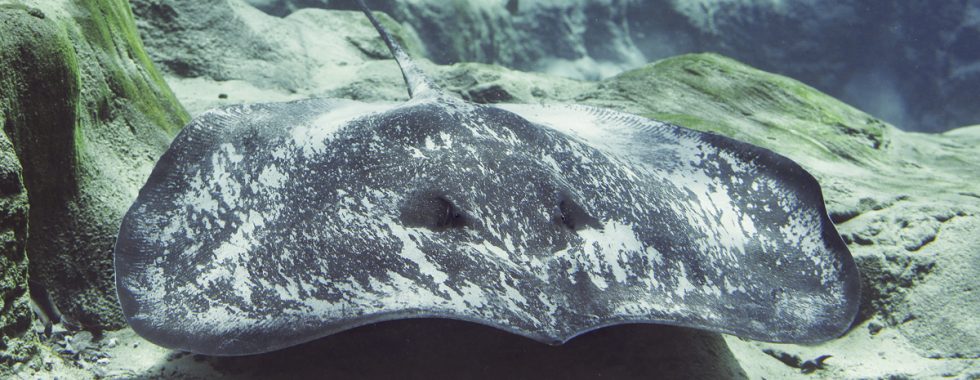Animals of the region
Cantor's Turtle
Also known as the “Asian giant soft shell turtle”, (Pelochelys cantorii)
The species of fresh water turtle known as Cantor’s giant soft shell turtle is named after Danish physician and zoologist Theodore Edward Cantor. What shell you may ask, as the shell looks like it was made of play dough and got run over and smashed by a truck. How does the soft shell protect them? Well, it may not have thick tiles covering the outside but there is still a layer of bone beneath. Found in eastern and southern India, Bangladesh, Burma, Thailand, Malaysia, Cambodia, Vietnam, eastern and southern China, Singapore, the Philippines, and Indonesia, this turtle is unfortunately considered endangered because of habitat loss and hunting. However, recent discoveries of populations still producing hatchlings and showing up here and there in muddy Asian rivers have given conservationists room for hope.
When they reproduce, they tend to lay about 20-50 eggs during the early months. These turtles grow to about 6 feet (2 meters) long, and spend 95 percent of their lives buried under dirt and motionless, with only its mouth and eyes exposed. An ambush predator, these turtles survive by feeding on crustaceans, mollusks, and fish. All that lying around motionless in the mud and sand makes them hard to find. But since the new populations turtles have been found conservation efforts have increased in an attempt to save the species from extinction.
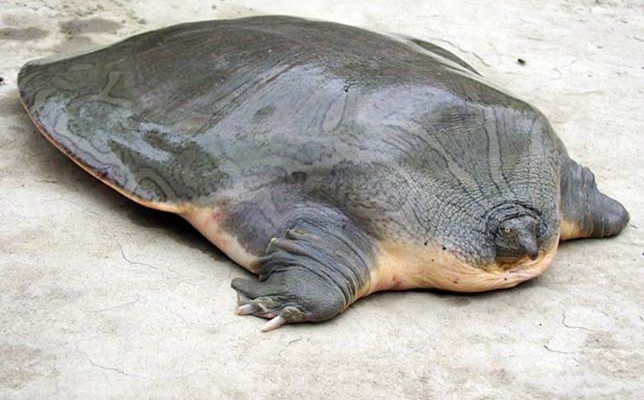
Description
Cantor’s turtle has a small and flattened head, a very short tubular nose and small, round eyes close to the tip of the snout.
The shell has a skin layer over it which continues from the shell over the neck in folds and out to the limbs and tail. Upper shell, flippers and top of head are green to gray or brown with fine speckles. The average adult shell length is 120cm but they can grow much larger, up to 200 cm. The hatchlings shell length is on average 37-42mm. In adults the shell is round, but in hatchlings the shell is slightly elongated.
Average adult weight is 50 kg.
Cantor’s Giant Soft Shell Turtle inhabits large lowland rivers such as the Mekong, from the deep sandy middle reaches to the muddy estuaries and tidal mudflats. Females lay nests once a year from November to June containing up to 50 eggs.
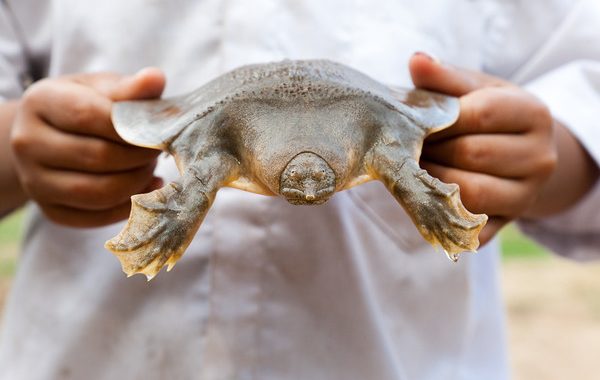
Diet:
Omnivore. Feeds on fish, prawns and crabs, perhaps also on molluscs and some aquatic vegetation; many captives accept only live fish or refuse food altogether.
Bangladesh, Cambodia, China, India, Indonesia, Lao, Malaysia, Myanmar, Philippines, it is extinct in Thailand and Vietnam. So far in Cambodia, this species is reported to exist only in the Mekong River in the sections ranging from Kratie up to Stung Treng province. This species has also been reported in interviews with local people to the east, in the Sesan River, a major tributary to the Mekong River. However, this population has not been confirmed.
Population:
It is unknown how many soft shell turtles actually exist in the Mekong River. Below are the numbers of turtles released between 2007-2011:
In the first year 150 turtles have been head started at the center for release back into the Mekong River. This subsequent nesting season has produced 1,300 hatchlings, 1,100 of which have been directly released back into the Mekong River where they were originally hatched, and 200 have been retained at the center for head starting next year.
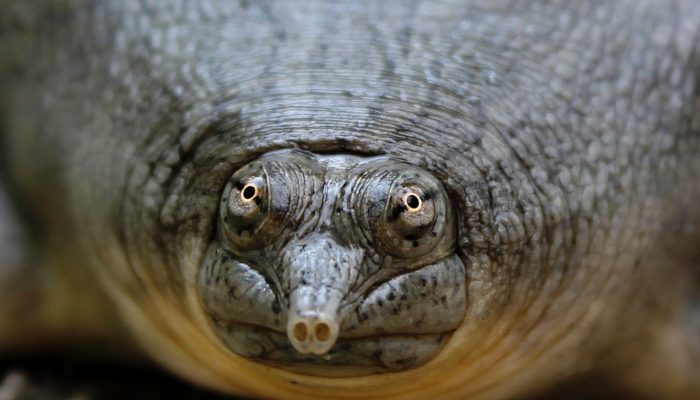
The flying foxes
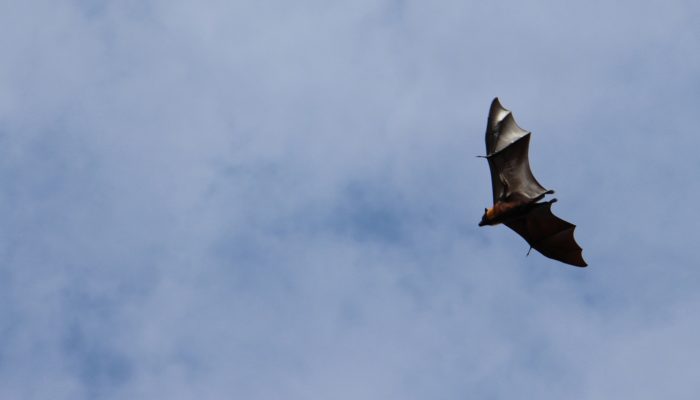
The small forest just behind Rajabori is home to the island’s majestic flying foxes, loads of them ! This magnificent species is called Lyle’s flying fox (Pteropus lylei) a species of flying fox in the family Pteropodidae. It is found in Cambodia, Thailand, and Vietnam.
Bats of the genus Pteropus, belonging to the megabat suborder, Megachiroptera, are the largest bats in the world. They are commonly known as the fruit bats or flying foxes among other colloquial names. They live in the tropics and subtropics of Asia (including the Indian subcontinent), Australia, East Africa, and a number of remote oceanic islands in both the Indian and Pacific Oceans.
The oldest ancestors of the genus Pteropus to be unearthed appear in the fossil record almost exactly as they are today, the only notable differences being early flight adaptations such as a tail for stabilizing. The oldest megachiropteran is dated about 35 million years ago, but the preceding gap in the fossil record makes their true lineage unknown.
Description:
The pelage is long and silky with a dense underfur. No tail is present. As the name suggests, the head resembles that of a small fox because of the small ears and large eyes. Females have one pair of mammae located in the chest region. Ears are simple (long and pointed) with the outer margin forming an unbroken ring (a defining characteristic of megabats). The toes have sharp, curved claws.
Characteristically, all species of flying foxes only feed on nectar, blossoms, pollen, and fruit, which explains their limited tropical distribution. They do not possess echolocation, a feature which helps the other suborder of bats, the microbats, locate and catch prey such as insects in midair. Instead, smell and eyesight are very well-developed in flying foxes. Feeding ranges can reach up to 40 miles. When it locates food, the flying fox “crashes” into foliage and grabs for it. It may also attempt to catch hold of a branch with its hind feet, then swing upside down; once attached and hanging, the fox draws food to its mouth with one of its hind feet or with the clawed thumbs at the top of its wings.
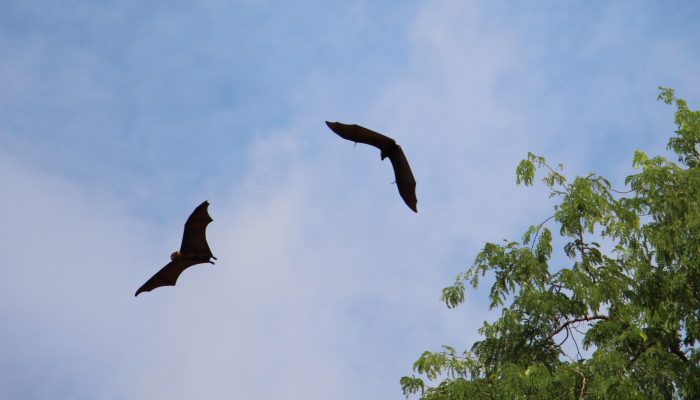
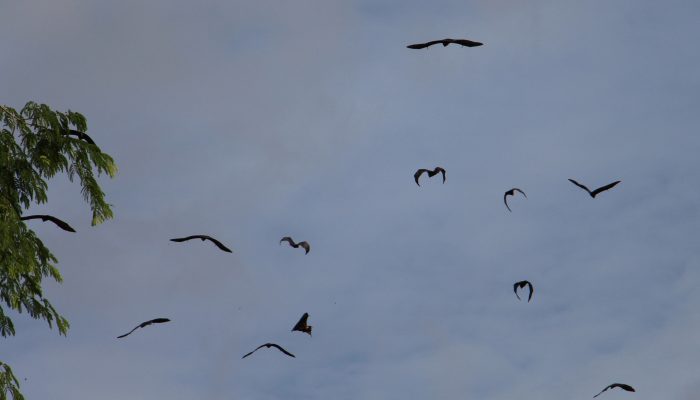
Mekong Giant Stingray (Himantura chaophraya)
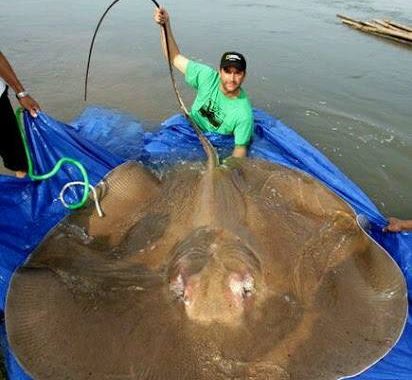
The giant stingray is one of the world’s largest freshwater fish, but it’s also cloaked in mystery. No one is sure how many giant stingrays are left, which habitats they prefer, or even if they ever venture into the ocean, where their more commonly known relatives dwell.
These ancient fish, little changed over many millions of years, can reach 16.5 feet (5 meters) long and weigh up to 1,320 pounds (600 kilograms). They are brown to gray in colour, wide and flat in form, and they sport a long, whip like tail.
Giant stingrays are known to prowl river systems in Thailand, Borneo, New Guinea, and northern Australia. They often bury themselves in sandy or silted river bottoms and breathe through holes, or spiracles, located on top of their bodies. Stingrays locate prey, usually clams and crabs, with a sensor that can detect an animal’s electrical field.
Stingray numbers appear to have dropped dramatically in recent years as their riverine habitats have degraded, and it appears they no longer inhabit some parts of their historical range. Large stingrays have been known to pull boats upstream and even underwater.
Though stingrays do not readily attack humans, they are one of the few mega fishes that can pose a real danger to those who handle them. Each ray sports a deadly barb on the base of its tail that can easily penetrate human skin and even bone, much like a hunting arrow. This stinger can be as long as 15 inches (38 centimetres) and typically introduces toxins to the victim’s wound.
